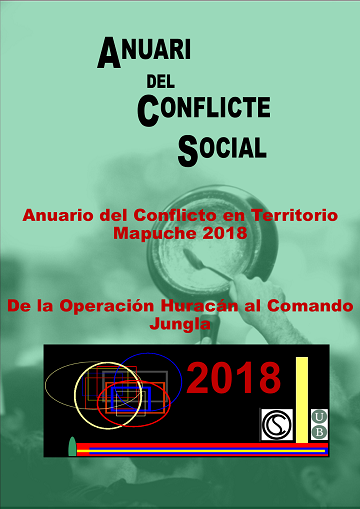THE MULTIPLE AND SYSTEMATIC VIOLENCES LINKED TO FOREST EXTRACTIVISM IN WALLMAPU
DOI:
https://doi.org/10.1344/ACS2019.9.8Keywords:
extractivism, forestry industry, businesses, Mapuche people, physical violence, symbolic violence, psychological violenceAbstract
A great deal of the development and expansion of the forestry industry has taken place due to the agrarian counter-reformation implemented in the dictatorship era, by which —by virtue of Decree Law 701— lands were given back to the oligarchy and public resources were allocated to forestry companies. From then on, the state has implemented a series of actions to protect the property of several land-owning families in Wallmapu. These strategies of protection have gone hand in hand with different forms of violence that have been implemented in this territory and have affected the daily lives of its residents. Thus, this article deals with the ways in which these forms of violence are materialized and it sheds light on their re-occurrence and their severity. With this goal in mind, we distinguish three main forms of violence: (1) physical, (2) ecological, and (3) symbolic. So, this chapter presents a discussion of how the repressive strategies of states are implemented and what actors —for example, businesses— take part in them.
Downloads
Published
How to Cite
Issue
Section
License
Copyright (c) 2020 Marien González-Hidalgo, Sandra López-Dietz

This work is licensed under a Creative Commons Attribution 4.0 International License.
AUTHORS RETAIN COPYRIGHT. CREATIVE COMMONS
The authors who publish in this journal agree to the following terms:
- The authors retain the copyright and grant the journal the right of first publication of the work, which will be disseminated following the Creative Commons Attribution license.
- Authors are free to establish additional independent contractual agreements for the non-exclusive distribution of the version of the work published in the journal (such as publication in an institutional or thematic repository, their personal website or a book), provided have your initial publication in this journal recognized.
- Texts will be published under a Creative Commons Attribution License that allows others to share the work, provided they include an acknowledgement of the work’s authorship, its initial publication in this journal and the terms of the license.
- Self-archiving of pre-print and post-print versions is allowed.
Privacy statement
The email addresses and names entered in this publication will be used exclusively for the purposes declared and will not be used for any other urposes or made available to third parties.







